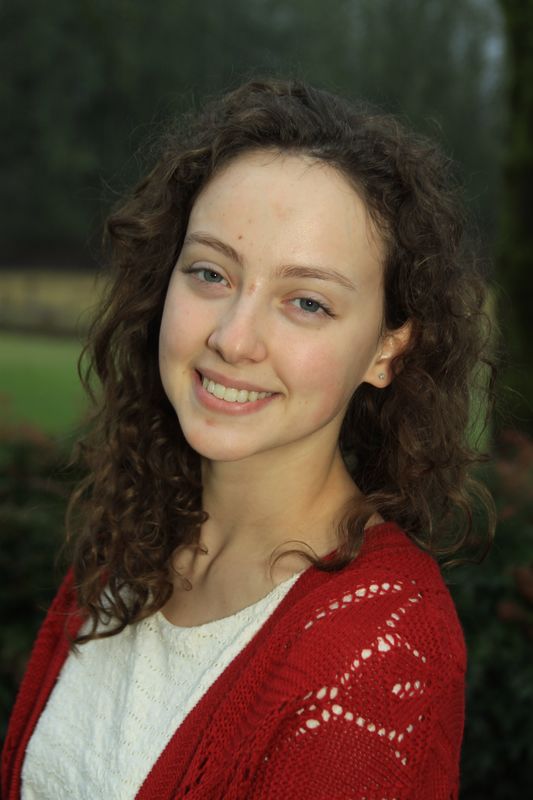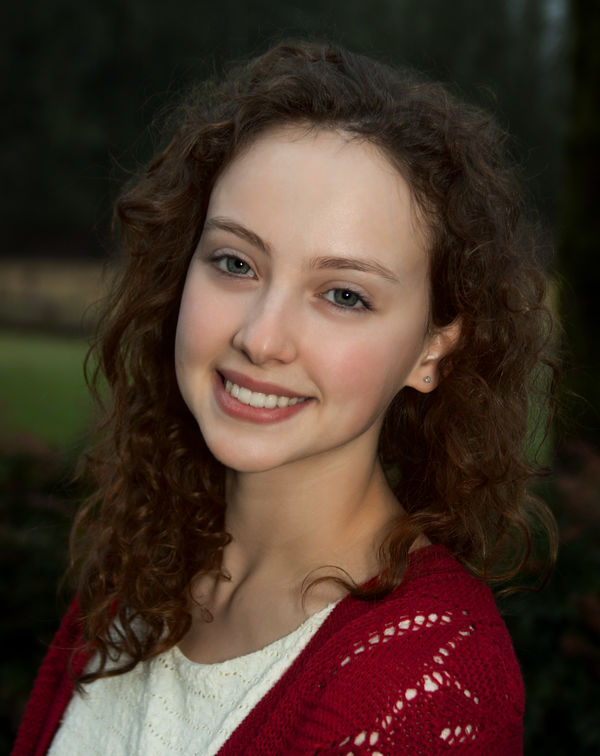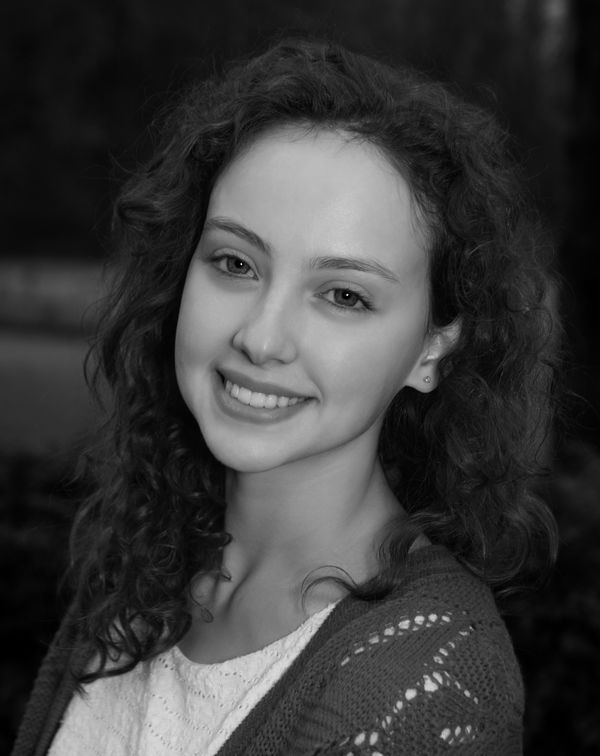pp in Portrait pro 18 any suggestions welcomed
Feb 1, 2019 22:39:31 #
Greg Huntsinger
Loc: Battle Ground WA.
I am new in this program . #1 original #2 Portrait Pro #3 B&W in GIMP 2.10
Feb 1, 2019 22:41:55 #
Greg Huntsinger wrote:
I am new in this program . #1 original #2 Portrait Pro #3 B&W in GIMP 2.10
Nice program and nice work, just do not overdo it.
Feb 2, 2019 06:01:16 #
The yellow skin tones of the original weren't ideal, regardless of how true-to-life they were. To my eye the lighting looks spot on and nothing has been overdone.
Feb 2, 2019 06:04:33 #
R.G. wrote:
The yellow skin tones of the original weren't ideal, regardless of how true-to-life they were. To my eye the lighting looks spot on and nothing has been overdone.
I agree, it looks very good but sometimes PP can take it to far. I can take 30 years off of the wife's face.
Feb 2, 2019 08:15:48 #
Feb 2, 2019 09:09:41 #
Good job, Greg. It's easy to over-cook in that application. You did great!
Feb 2, 2019 10:14:29 #
No.2 looks fine but slightly too strong. I am not familiar with Portrait Pro. If it has layers like PS, I'd apply the fix then back off on opacity until I saw some wrinkles (even in your young, attractive model.)
Feb 2, 2019 13:26:28 #
The retouching is well applied and is appropriate for the subject. Young folks, at a certain age, may tend to develop some blemishes such as acne or slightly oily skin and they certainly don't want to see this in a portrait. It is not like "character" lines or wrinkles in an elderly person or in someone with a "weathered" complexion. Blemishes like those only serve as a distraction.
The skin still has some texture and tone, it does no look waxen or as if excessive makeup has been applied.
As I have mentioned in a previous post, I will advise my clients on theses aesthetics, however, the extent of correction is really up to the client. I ascertain their requirements before the session and approach the lighting, pose, camera angle as well as the extent of post-processing retouching. I won't shoot indiscriminately and then attempt to rework all the aesthetics in post-processing.
The Portrait-Pro software is an extremely efficient and well-designed program. It has a wide scope of certain automated functions but the operator still has a significant degree of control. There are certain pre-sets as well as manual functions.
It's like an advanced digital camera that can be used in manual mode, the programs can be selected as to priority OR for those will lesser degrees of skill and experience, it becomes a great point and shoot camera. For those with no prior experience or knowledge of retouching, the Portrait-Pro software can do an acceptable job. If you know what you are doing, it's a helpful workflow tool. It is not a terribly expensive download, it comes in various versions and it is well backed up by the providers. It's worth a shot for interested portrait shooters. Like everything else in photography, you will need to experiment, practice and get the feel of the different features and actions.
It is difficult to critique retouching as to the level of correction unless the results are extremely overdone and seem entirely artificial or if serious distractions have not been attended to. There are many aspects of any given portrait that can significantly influence its quality that has nothing to do with retouching or post-processing, such as elements of composition, pose, lighting, expression, eye direction management, ratio and more. Some of these can be altered in post-production but may require advanced skills and nonetheless can oftentimes result in obvious artificial results or loss of the true likeness of the subject.
What is too much or too little? In a retouching class or seminar, participants are given an image and then the results are compared. There may be many variations that are acceptable but there may be differences of opinion. Personally, I am not in favor of indiscriminately "taking 20 years off" someone's image but there are subtle ways of de-emphasizing certain undesirable blemishes or features.
Not to forget- Post processing is not only a matter of traditional "retouching". There are also elements of composition, color balance, background management, retaining detail by dodging and burning in, correcting for exposure errors and more.
And...don't forget the psychology or business aspect in portrait photography. The subject or client is oftentimes the arbiter of how much correction is to be applied. He or she who writes the checks get to be the boss or art director! Not everyone is interested in a documentary version of their face! Some of my clients don't wanna know from all the super sharp high acutance lenses, monster megapixels that we all like to like to talk about around here. If they knew the technical terms, I'm sure some would say "bring on the aberrations and diffraction- add some diffusion, I wanna be soft and fuzzy"!
I will never forget the most impressive and beautiful 90-year-old lady that came to my studio for a portrait. A soon as I saw her I envisioned my next entry in the annual print competition- a super sharp detailed low key black and white study that was gonna take every award in the house! (When it comes to print competitions, I become a closet egomaniac- otherwise, I am a humble old geezer) I'll never forget what she told me- I'll paraphrase- "Listen here, Sonny... Last year I was photographed by that... Mr. Karsh- he made my face look like a relief map of the Himalayas- you are not gonna do that, are you?- I don't wanna be remembered that way"! Karsh is my Hero- he was the Ansel Adams of portraiture! The lady did not want a "landscape" of her face but a more sympathetic interpretation. Portraiture is not always photojournalism! Sometimes you can be an "artist" and sometimes you need to be a "commercial artist"!
Aside from retouching:
Obviously, this is not the "portrait" section, however, as I alluded to, post-processing is just a part of the total portraiture process. Careful preparation and camera work make the workflow and final result easier to navigate and achieve.
The lighting in this image seems a bit flat- possibly due to the use of flash or flash fill. There is a central catch-light in the eyes and a highlight at the tip on the nose is indicative of this kind of lighting. Moving the flash off camera or using a reflector to create directional lighting can yield better modeling. Sometimes this kind of lighting results in a darker background, which is fine; however, in this case, the hair is somewhat lacking in shadow detail and separation.
In a planned session there is usually time to suggest clothing or costume choices. In a portrait, it is best that the emphasis be placed on the subject's face and skin tone. The bright red clothing draws the eye away from the face and the chroma in the red is further emphasized by the green foliage in the background. Some of these issues can be subdued in post-processing.
Sometimes, even the most expertly applied retouching requires just a touch of diffusion. There may be an "edge" that becomes noticeable where the retouching was applied where the application might not have been "feathered" or blended enough. The degree of softness does not have to be too apparent - just enough to blend in the work. If this kind of allover softening is not available in your retouching software, you can bring the image into PhotoShop and apply a tiny bit of Gaussian Blur.
This is a throwback to the olden days of negative retouching. Any minor discrepancies could be blended in print retouching and/or some diffusion could be implemented in the enlarging process. Nowadays in digital work, it all has to be done at once and we are assessing the results on a high-resolution trans-illuminated monitor screen- it's like examining the work under a microscope so it's a tall order.
In my own studio work, some of my corporate and business portrait images will be viewed online but the majority will be displayed or presented in prints or will be photomechanically or lithographically reproduced in publications so we have more intermediate controls along the way to final viewing.
The skin still has some texture and tone, it does no look waxen or as if excessive makeup has been applied.
As I have mentioned in a previous post, I will advise my clients on theses aesthetics, however, the extent of correction is really up to the client. I ascertain their requirements before the session and approach the lighting, pose, camera angle as well as the extent of post-processing retouching. I won't shoot indiscriminately and then attempt to rework all the aesthetics in post-processing.
The Portrait-Pro software is an extremely efficient and well-designed program. It has a wide scope of certain automated functions but the operator still has a significant degree of control. There are certain pre-sets as well as manual functions.
It's like an advanced digital camera that can be used in manual mode, the programs can be selected as to priority OR for those will lesser degrees of skill and experience, it becomes a great point and shoot camera. For those with no prior experience or knowledge of retouching, the Portrait-Pro software can do an acceptable job. If you know what you are doing, it's a helpful workflow tool. It is not a terribly expensive download, it comes in various versions and it is well backed up by the providers. It's worth a shot for interested portrait shooters. Like everything else in photography, you will need to experiment, practice and get the feel of the different features and actions.
It is difficult to critique retouching as to the level of correction unless the results are extremely overdone and seem entirely artificial or if serious distractions have not been attended to. There are many aspects of any given portrait that can significantly influence its quality that has nothing to do with retouching or post-processing, such as elements of composition, pose, lighting, expression, eye direction management, ratio and more. Some of these can be altered in post-production but may require advanced skills and nonetheless can oftentimes result in obvious artificial results or loss of the true likeness of the subject.
What is too much or too little? In a retouching class or seminar, participants are given an image and then the results are compared. There may be many variations that are acceptable but there may be differences of opinion. Personally, I am not in favor of indiscriminately "taking 20 years off" someone's image but there are subtle ways of de-emphasizing certain undesirable blemishes or features.
Not to forget- Post processing is not only a matter of traditional "retouching". There are also elements of composition, color balance, background management, retaining detail by dodging and burning in, correcting for exposure errors and more.
And...don't forget the psychology or business aspect in portrait photography. The subject or client is oftentimes the arbiter of how much correction is to be applied. He or she who writes the checks get to be the boss or art director! Not everyone is interested in a documentary version of their face! Some of my clients don't wanna know from all the super sharp high acutance lenses, monster megapixels that we all like to like to talk about around here. If they knew the technical terms, I'm sure some would say "bring on the aberrations and diffraction- add some diffusion, I wanna be soft and fuzzy"!
I will never forget the most impressive and beautiful 90-year-old lady that came to my studio for a portrait. A soon as I saw her I envisioned my next entry in the annual print competition- a super sharp detailed low key black and white study that was gonna take every award in the house! (When it comes to print competitions, I become a closet egomaniac- otherwise, I am a humble old geezer) I'll never forget what she told me- I'll paraphrase- "Listen here, Sonny... Last year I was photographed by that... Mr. Karsh- he made my face look like a relief map of the Himalayas- you are not gonna do that, are you?- I don't wanna be remembered that way"! Karsh is my Hero- he was the Ansel Adams of portraiture! The lady did not want a "landscape" of her face but a more sympathetic interpretation. Portraiture is not always photojournalism! Sometimes you can be an "artist" and sometimes you need to be a "commercial artist"!
Aside from retouching:
Obviously, this is not the "portrait" section, however, as I alluded to, post-processing is just a part of the total portraiture process. Careful preparation and camera work make the workflow and final result easier to navigate and achieve.
The lighting in this image seems a bit flat- possibly due to the use of flash or flash fill. There is a central catch-light in the eyes and a highlight at the tip on the nose is indicative of this kind of lighting. Moving the flash off camera or using a reflector to create directional lighting can yield better modeling. Sometimes this kind of lighting results in a darker background, which is fine; however, in this case, the hair is somewhat lacking in shadow detail and separation.
In a planned session there is usually time to suggest clothing or costume choices. In a portrait, it is best that the emphasis be placed on the subject's face and skin tone. The bright red clothing draws the eye away from the face and the chroma in the red is further emphasized by the green foliage in the background. Some of these issues can be subdued in post-processing.
Sometimes, even the most expertly applied retouching requires just a touch of diffusion. There may be an "edge" that becomes noticeable where the retouching was applied where the application might not have been "feathered" or blended enough. The degree of softness does not have to be too apparent - just enough to blend in the work. If this kind of allover softening is not available in your retouching software, you can bring the image into PhotoShop and apply a tiny bit of Gaussian Blur.
This is a throwback to the olden days of negative retouching. Any minor discrepancies could be blended in print retouching and/or some diffusion could be implemented in the enlarging process. Nowadays in digital work, it all has to be done at once and we are assessing the results on a high-resolution trans-illuminated monitor screen- it's like examining the work under a microscope so it's a tall order.
In my own studio work, some of my corporate and business portrait images will be viewed online but the majority will be displayed or presented in prints or will be photomechanically or lithographically reproduced in publications so we have more intermediate controls along the way to final viewing.
Feb 2, 2019 17:50:00 #
Feb 2, 2019 18:09:06 #
Greg Huntsinger
Loc: Battle Ground WA.
THANKS all for your support .I appreciate the feed back , have a good day
Feb 2, 2019 18:44:54 #
davefales wrote:
No.2 looks fine but slightly too strong. I am not familiar with Portrait Pro. If it has layers like PS, I'd apply the fix then back off on opacity until I saw some wrinkles (even in your young, attractive model.)
The last version I worked with broke the face into ‘components’ (eyes, nose, mouth, etc.), then give a set of very good controls to each component. For portrait work, it’s a worthy contender.
Feb 2, 2019 20:33:57 #
If you want to reply, then register here. Registration is free and your account is created instantly, so you can post right away.









